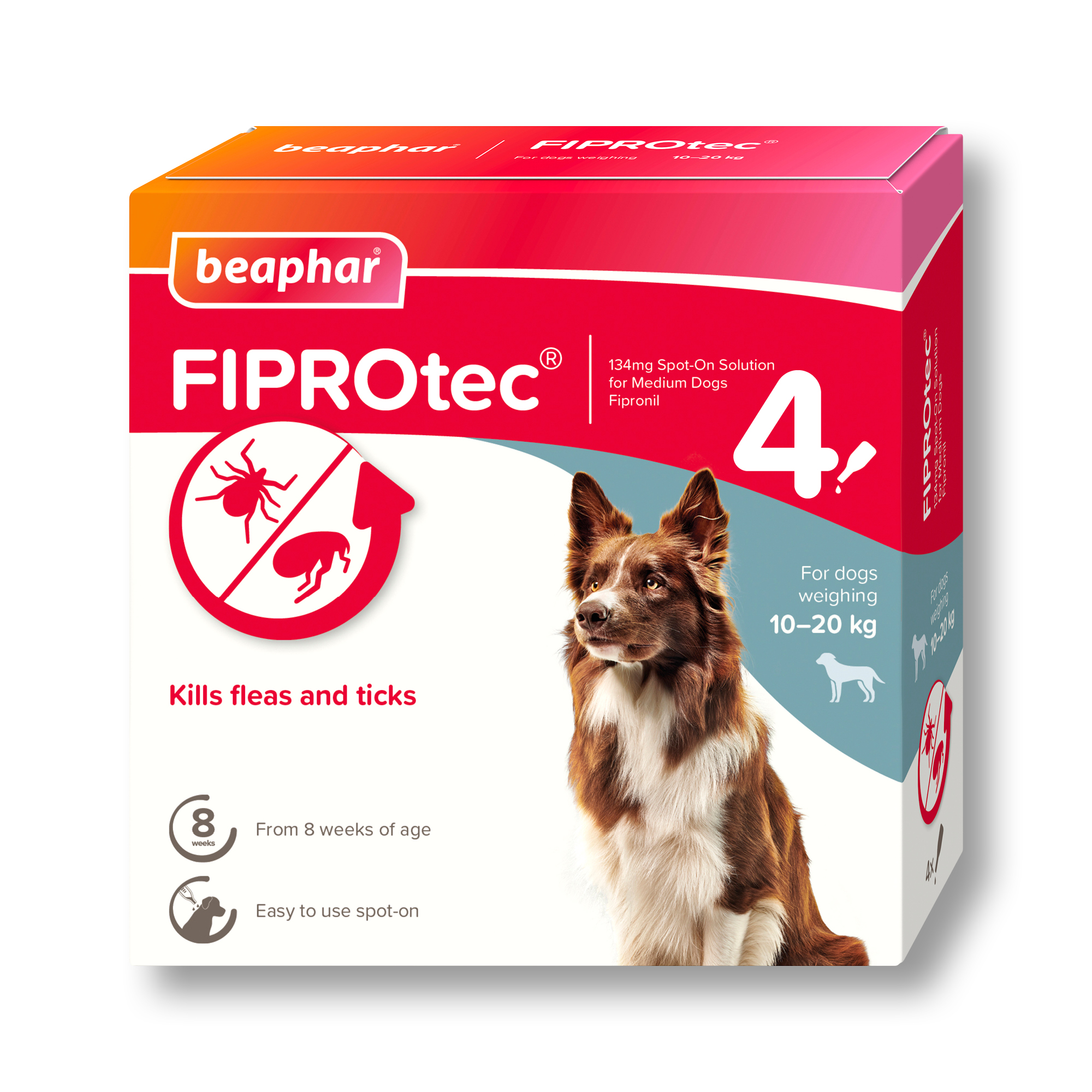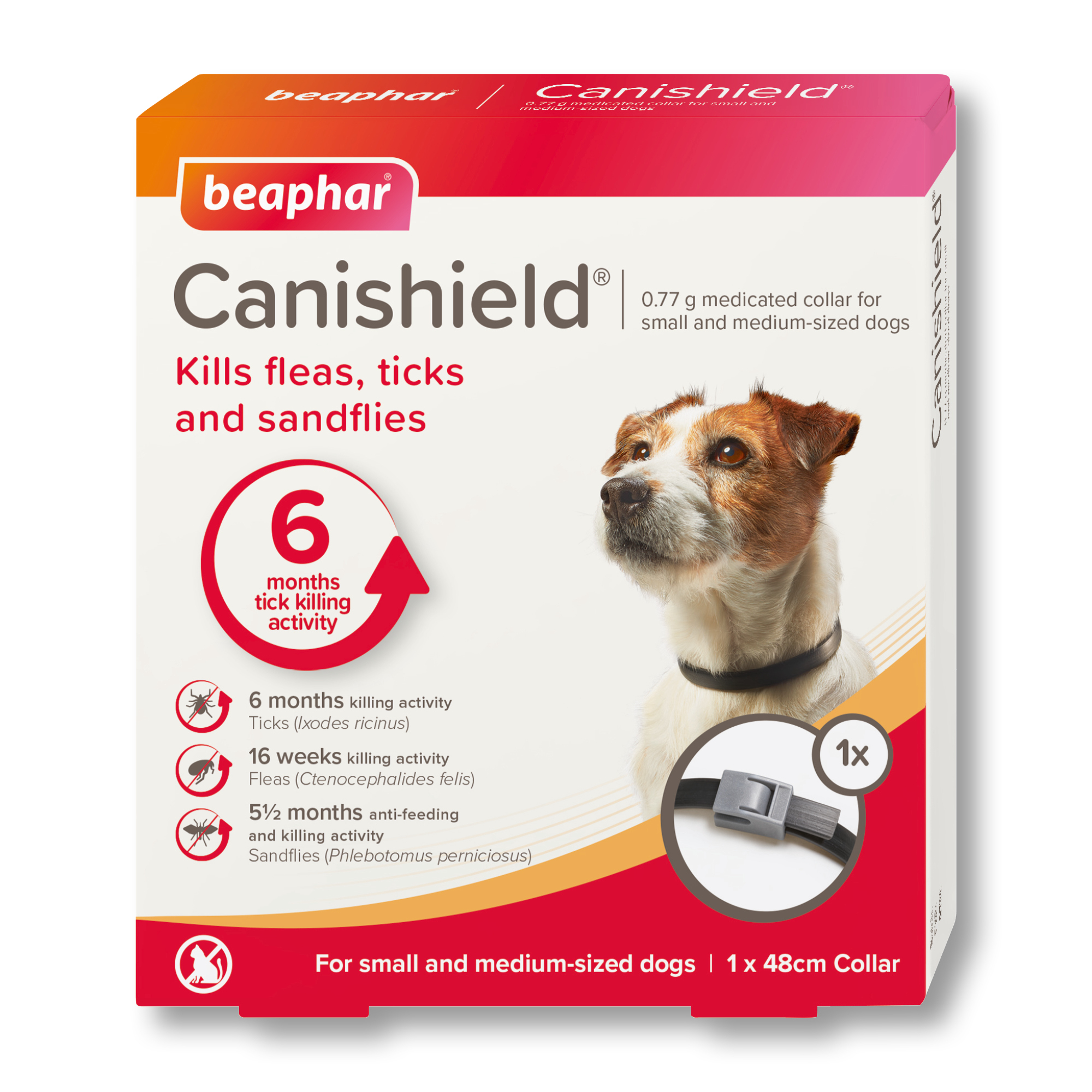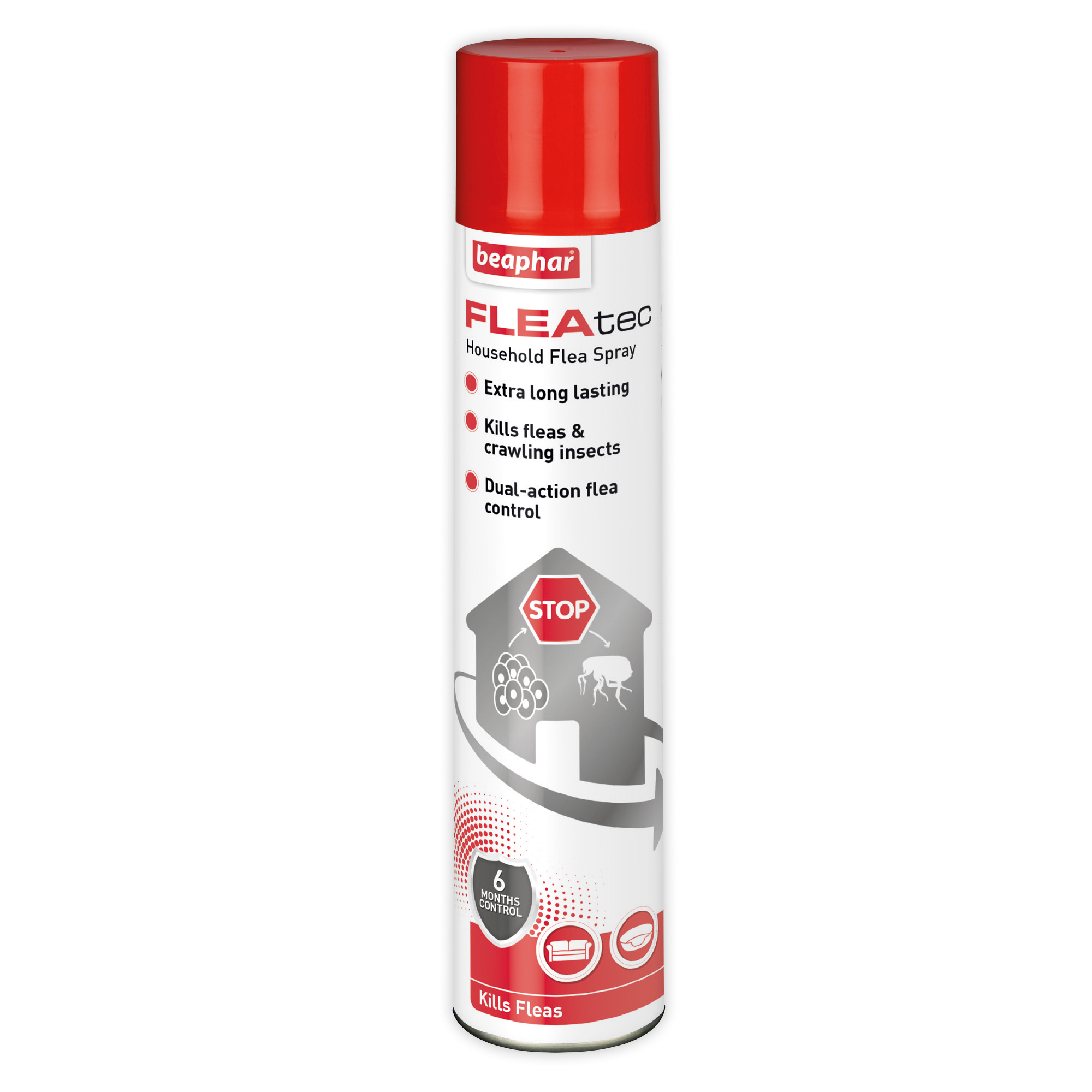Choosing the right flea treatment
When it comes to choosing a flea comes to choosing a flea and tick treatment for cats and dogs, it can be a minefield! With such a variety of options, from, spot-ons, collars, sprays and tablets, which one should you choose and which will be best for your pet?
Treating your pet: 3 top tips choosing on-animal flea treatments
Is the flea or tick treatment suitable for my cat or dog?
Like all veterinary medicines, specific flea and tick treatments are designed for different ages and weights of animals. Many flea treatments are also species specific. Before flea treating your cat or dog, be sure to weigh your pet and read the pack information carefully.
If you’re still unsure, speak to your pet retailer for advice before making a purchase.
Beaphar has a range of on-animal flea and/or tick control products for cats and dogs. The range includes:
- Beaphar FIPROtec® Spray, which is suitable for kittens and puppies from 2 days of age.
- Beaphar FIPROtec® Spot-On, which is suitable for cats or dogs. Cats must be 8 weeks of age and weigh 1kg or more. Dogs must be 8 weeks of age and weigh 2kg or more. You will need to pick either Beaphar FIPROtec® Spot-On for Small Dogs, Medium Dogs, Large Dogs or Extra Large Dogs, depending on the weight of your dog.
- Beaphar FIPROtec® COMBO, which is suitable for cats or dogs. Cats must be 8 weeks of age and weigh 1kg or more. Dogs must be 8 weeks of age and weigh 2kg or more. You will need to pick either Beaphar FIPROtec® COMBO for Small Dogs, Medium Dogs or Large Dogs, depending on the weight of your dog.
- Beaphar Soft Flea Collars, which are suitable for cats from 12 weeks of age
- Beaphar Canishield® Collar for Dogs, which is suitable for dogs from 7 weeks of age
Is the flea treatment suitable for my current flea control situation?
For flea infestations:
Choose an on-animal flea treatment that kills adult fleas and a household flea treatment that contains an Insect Growth Regulator (IGR), such as Beaphar FIPROtec® COMBO.
95% of a flea infestation is in the environment. This is where you will find flea eggs, flea larvae, flea pupae and newly hatched adult fleas. Only 5% of the flea infestation is on your pet, and is made up of adult fleas.
If you only treat your pet then you will only kill the adult fleas on your pet at the time. If you miss a flea treatment or the efficacy of the flea treatment is compromised (e.g. your pet becomes excessively wet and the flea treatment is washed off), then recently acquired adult fleas may lay eggs. Once these eggs are in the environment, if you haven’t treated your home there is nothing to prevent them from developing into more adult fleas. This is when a flea infestation can occur.
Will my flea treatment prevent future flea infestations?
Prevention by far is the best method of treating your pet. and there is a choice of flea treatment methods. It’s just a question of which solution suits you, your pet and your lifestyle best.
You can either use: A combination flea treatment for your pet that contains both an insecticide and an Insect Growth Regulator (IGR), such as Beaphar FIPROtec® COMBO.
Beaphar FIPROtec® COMBO is ideal for busy families as it targets the adult fleas, flea eggs and flea larvae. It allows you to get the job done in one; just apply the spot-on to your cat or dog once every four weeks.
OR you can use:
A flea treatment for your pet containing an insecticide, such as Beaphar FIPROtec® Spot-On, and a household flea treatment containing both an insecticide and an IGR, such as Beaphar FLEAtec Household Flea Spray.
Beaphar FIPROtec® Spot-On can be applied to pets once every four weeks and kills adult fleas. Beaphar FLEAtec Household Flea Spray targets adult fleas, flea eggs and flea larvae in the environment, and is effective for up to six months. When used in combination and at the recommended treatment intervals, they do exactly the same job as Beaphar FIPROtec® COMBO.
The key thing to remember when it comes to flea treatment is to follow the instructions on the pack. Any gaps in treatment allow fleas to complete their life cycle. This is when a flea infestation can occur.
Some pet owners let their flea treatment routines drop in the winter, believing it is too cold for fleas. And it is true that fleas thrive and reproduce more quickly in warmer environments. However, warmer winters are allowing fleas to stay active for longer. Plus, central heating in homes provides optimum conditions for fleas to thrive all year round. In order to provide your pet, your home and your family with year-round flea protection, you must protect your home as well as your pet.
Conclusion
Ultimately, finding the best flea treatment for your dog or cat amidst all the options is achievable using these tips. Whether you need effective dog flea treatments for an existing issue (keep an eye out for tell-tale flea dirt!) or reliable year-round prevention, always consider your pet's specific needs and your home environment. Options like spot on treatments work well for many, targeting pests directly, but remember the importance of the active ingredients – especially those, like IGRs, that tackle the eggs and larvae where 95% of fleas living develop. Consistent application of your chosen solution, following the product guidance carefully, is the most effective way to ensure your pet stays comfortable, healthy, and flea-free.
Did you know...
Only 5% of a flea infestation is on the pet? That means 95% is in the home.






